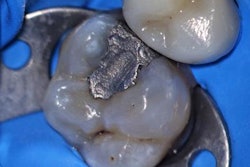
As dentists and team members, we know that not every dental patient is going to walk out of our practice happy. We also know there are those who will say everything is fine to our face but then go home and decide to post something on social media that says otherwise.
There's also a difference between patients who are just unhappy and those who are unhappy enough to pursue legal action. MedPro Group is a liability insurance company that services physicians and dentists and has worked with many dentists on protection against malpractice. They have many case studies of interactions between patients and dentists after the procedure is over. With that in mind, I looked at a recent MedPro case study of a legal battle that erupted between a patient and a dentist.
As we know, there are many ways dissatisfied patients can seek monetary compensation and/or restitution from dentists whom they believe improperly treated them. There are a number of paths by which dissatisfied patients can seek redress, and each of them must be handled separately and independently, as this case study demonstrates.
Facts
A 41-year-old man presented to Dr. G, an insured solo practitioner, with concerns about the appearance and function of his upper anterior teeth. He had experienced trauma to his face during a soccer game while in his early 20s, which resulted in several cracked and chipped incisors. His dentist at the time treated teeth #9 and #10 with endodontics, posts, and crowns, and teeth #8 and #11 had composites placed to restore chips on the incisal surfaces. To make matters worse esthetically, the patient had tetracycline staining of his teeth, so shade matching for the restorations had been challenging and far less than ideal.
When the patient came to Dr. G, a general dentist, he was no longer willing to accept the appearance of his multicolored teeth. He was also concerned about biting into hard foods, for fear of the composites breaking off.
Dr. G and the patient agreed to a treatment plan of having teeth #6-11 individually crowned, so that uniformity in cosmetics could be achieved, while also adding strength to the incisally restored teeth. The crowns were fabricated and permanently cemented after having them in place for two weeks with temporary cement.
A few months later, the patient returned expressing dissatisfaction with the shade of the crowns and wanting a full refund, or to have them replaced at no cost. Dr. G said he would replace them for lab costs only but would not give a refund. The patient did not accept the replacement offer and left the practice unhappy.
Peer review
The patient submitted an online complaint to the peer review committee of the local dental society. As a general rule, the peer review process involves the members of the dental society assessing the quality of the dental care provided, based on reviewing dental charts and radiographs, and the examination of the complaining patient. If the peer reviewers find the work to have been inadequate, they will require the dentist to refund all or part of the money paid by the patient, as a condition of membership in the society. The committee requirements for submission of a claim included the provision that by submitting a peer review complaint, the patient waives his right to sue the dentist in court, thereby vesting sole authority over the dispute to the peer review process.
When the committee received and reviewed the complaint, they determined that the dentist was not a member of the dental society, so the committee had no authority over the dentist to assess the claim or require that the dentist refund any money to the patient. The patient was so informed, and Dr. G was sent a copy of all documents involving peer review as a courtesy.
Malpractice suit filed
When the patient learned that peer review was not an option, he filed a dental malpractice case against Dr. G as a self-represented plaintiff. After Dr. G was served with the court papers, he contacted MedPro and the office was assigned his defense.
Among MedPro's first steps in defending Dr. G was immediately filing a motion to dismiss the case on the grounds that the mere filing of a peer review complaint -- regardless of how that played out -- constituted a waiver of the patient's right to sue the dentist in court, as set forth in the peer review committee's rules, to which the patient had agreed. The judge found that, although this strict literal interpretation was correct, and it would have applied if there had been any substantive peer review finding, denying the plaintiff any potential recourse would be unfairly prejudicial to him. So the case was permitted to proceed.
At the bench trial, the plaintiff presented his case by explaining his dissatisfaction with Dr. G's work and by presenting a certified copy of the records of the dentist who subsequently replaced the six crowns. Neither the subsequent dentist nor any other expert dentist was brought to court by the plaintiff to testify to Dr. G's claimed negligence or dental malpractice.
MedPro argued that the subsequent dental records did not contain any criticisms of Dr. G's treatment, but only stated that the crowns were replaced due to the patient's esthetic desires. And even if anything in those records could be construed to be critical, that dentist would need to be subject to cross-examination to test the veracity and bases of such opinions. There is a well-recognized concept among lawyers which is directly applicable here: "A piece of paper cannot be cross-examined."
The judge agreed and dismissed the case on the ground that the plaintiff had failed to provide the requisite expert testimony, which is a bedrock principle in professional malpractice cases.
But this patient would not go away easily.
Disciplinary complaint filed
Shortly after the case was dismissed, Dr. G received a letter from his state's disciplinary office, stating that the patient had filed a complaint against him which asserted professional misconduct (which is defined by this office in the context of negligence to mean two or more acts of negligence, with each individual crown potentially serving as one act of negligence), and requiring that he provide the office with his complete set of records for this patient.
After Dr. G advised MedPro about the letter, MedPro was again retained to represent him for the disciplinary complaint.
MedPro notified the disciplinary office of its representation of Dr. G and advised them that a judge had already dismissed a malpractice suit brought against the client by the same patient for the same set of circumstances. The office responded that it was not interested in what the court did, as their function is separate from the courts. MedPro submitted a copy of Dr. G's records, as well as those of the subsequent dentist, which included before and after photographs, as well as a narrative describing the full series of relevant events.
After the usual bureaucratic time delay, the disciplinary office contacted MedPro with a short letter stating that they saw no basis to pursue professional discipline against Dr. G, but giving no reason for the decision.
All of the patient's attempts to seek money from and retribution against Dr. G had finally come to an end, but not without years of stress for Dr. G.
Takeaways
As always, thorough and accurate dental records are a necessity. Although here it was seemingly not a factor, the fact that the patient wore the crowns with temporary cement for two weeks before they were permanently cemented indicates that he was pleased with them by the time they were permanently inserted.
Every legal and quasilegal action taken by a patient must be taken seriously and be appropriately addressed with the assistance of legal representation. Judges will not generally dismiss cases on their own on procedural grounds -- such as for the failure to have expert testimony in a malpractice case. So it is unlikely that the judge here would have done so without an attorney raising the issue. Dentists may be lulled into thinking that a suit brought by a patient who is not represented by an attorney need not be reported to the insurance carrier or does not require an attorney's assistance, but that is strongly ill-advised.
Dentists, especially general and restorative dentists who have ongoing professional relationships and even friendships with their patients for many years, often see their patients as unlikely to sue or otherwise hurt them. But when disputes about money come into the picture, the relationships can turn adversarial. It warrants a full consideration when a patient asks for a refund or a free remake; that is not to suggest that one approach is preferred over another, but that determinations by the dentist are best when well-considered.
Finally, this case study demonstrates an extremely important factor to consider when selecting your malpractice insurance carrier. Are they able to successfully "defend" claims outside the court room without resulting in a settlement? This number is often referred to as "claims closed without payment," and you should ask any potential insurers for their record. In this case, Dr. G had the reassurance that MedPro closes 80% of claims without payment. They put the same effort into defending him outside the courtroom as they would have inside -- and that's why he was able to walk away from this ordeal with his finances, and reputation, intact.
To hear more thoughts on these types of situations, check out the video below.
Editor's note: The content within is not the original work of MedPro Group but has been published with consent. Nothing contained in this article is intended as legal advice. There are variations in rules of practice, evidence, and procedure among the states. Some of the facts and other case information have been changed to protect the privacy of actual parties.
The comments and observations expressed herein do not necessarily reflect the opinions of DrBicuspid.com, nor should they be construed as an endorsement or admonishment of any particular idea, vendor, or organization.



















